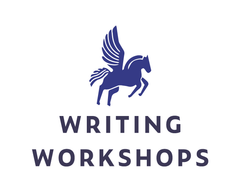by Writing Workshops Staff
9 months ago

Sarah Hosseini returns to teach one of our most popular classes! In her upcoming 4-week workshop, Writing Real Sex, Sarah invites writers of all backgrounds to write into the complexities and nuances of sexual storytelling. With a robust background in journalism and a TEDx talk championing unapologetic voices, Sarah fosters a safe and inclusive space where participants can harness the power of their narratives.
Through a meticulously crafted curriculum, writers will embark on a transformative writing journey, shedding inhibitions and embracing authenticity on the page.
From dissecting the craft of sex writing to understanding the path to publication, Sarah equips her students with the tools and confidence to navigate this intimate terrain.
With a focus on dismantling shame and amplifying diverse voices, Writing Real Sex promises to be a journey of self-discovery and literary empowerment, where each writer's unique story finds its voice.
Hi, Sarah. Please introduce yourself to our audience.
Hi, I’m Sarah Hosseini. I am a writer professor, and speaker.
What made you want to teach this specific class? Is it something you are focusing on in your own writing practice? Have you noticed a need to focus on this element of craft?
Deciding to teach writing real sex is something that I have believed in for a very long time. There is a large gap and opportunity in literature to capture sex in a way that is more real, raw, gritty, and authentic, specifically for writers who are women, disabled, non-binary, among others. For so long sex was only written by men or in so-called perfect ways for romance novels and I think literature would be served well by capturing more inclusive sexual experiences and diverse sex writing.
Give us a breakdown of how the course is going to go. What can the students expect? What is your favorite part about this class you've dreamed up?
First and foremost, I think what makes this course and really many of the courses that I teach unique is that I curate them for writers and also people who do not consider themselves writers.
Usually, I start with writing exercises that delve deep into the psyche first to see what is there to see what is blocked and what is waiting to be explored. Especially with sex. There are a lot of psychological barriers, taboo, and stigma, and sometimes we really need to work through that space before we can even begin to write our sexual experiences. The techniques are use have a lot of inherently, psychological and therapeutic components. They also incorporate poetry exercises, and music sounds and lyrics.
After we explore within ourselves first , then we explore diverse model texts. From there, we make decisions about what type of sex writing we would like to do (Graphic, abstract, or somewhere in the middle), and what we feel most comfortable to write about, and what would be best received by our intended audience.
Finally, we discussed and strategize ways to get these pieces published in places and spaces that the author feels comfortable with or dreams of.
What was your first literary crush?
Emily Dickinson. One of her poetry collections was gifted to me as a child. It was a vintage looking book. I don’t think I even knew what the poems meant but I was obsessed with reading them.
What are you currently reading?
The Language of Trees by Katie Holten and Remembered Rapture: The Writer at Work by Bell Hooks.
How do you choose what you're working on? When do you know it is the next thing you want to write all the way to THE END?
I choose what I’m working on based on how move, I am by the subject material. I used to turn out several essays and articles every week when I was a full-time freelance writer. But I find myself in a space now where I only want to write about things that deeply move me to do so, and usually those pieces pour out of me until the very end.
Where do you find inspiration?
My inspiration comes entirely from my pain.
What is the best piece of writing wisdom you've received that you can pass along to our readers? How did it impact your work? Why has this advice stuck with you?
Honestly, the best piece of writing wisdom that I have received hasn’t come from any writing instructors, coaches, or any other usual places that one would expect to get writing advice. Any writing advice that I follow now generally is based off of listening to my own creative process, and honoring it because not everybody’s advice is going to work for me.
What is your favorite book to recommend on the craft of writing? Why this book?
Remembered Rapture: The Writer at Work by Bell Hooks. I may be saying this because it’s the book I’m reading right now and somehow whatever I’m reading right now always seems like the most urgent, and earth shattering thing that I am reading. But this book has so far given me the impression that it’s actually more important to simply write, write real and well and worry, way less about craft.
Bonus question: What’s your teaching vibe?
Unhinged honestly, with a lot of love, woo-woo, and rebellion.
Learn more about working with Sarah:
You can sign up for Writing Real Sex here. Avoid the waitlist and sign up now.
Instructor Sarah Hosseini has written reported features and essays for The Atlantic, CNN, Harper’s Bazaar, The Washington Post, among other publications. She also delivered a TEDx talk, “Not Sorry,” on the stage in New Delhi, India, encouraging women to use their unapologetic voices.
